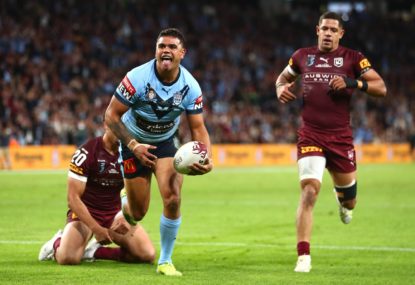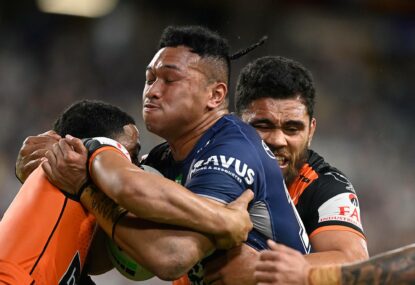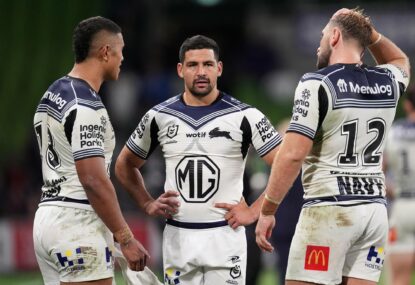There’s an old maxim along the lines of: ‘not understanding the mistakes of history dooms one to repeat them’.
There’s undoubtedly some truth to this. Not understanding the potential consequences of your actions is a sure way to fail, maybe even a sure ticket to a Darwin Award for those hardest of understanding and least averse to risk.
But there are plenty of exceptions. Many have succeeded in commerce and/or public life with little more than rat-like cunning and some well-placed connections, and a certain brazen disregard for knowledge and expertise is apparently a quite popular leadership trait these days.
We have a news cycle in which participants are often ‘stunned’, ‘shocked’ and ‘amazed’ by the most routine banality – some are even rumoured to have suffered jaw injuries after precipitous drops.
And nowhere else is such blithe ignorance – in other words, a lack of shame – more celebrated than in rugby league. Players like James Maloney and Cameron Munster have been lauded for their ability to forget what just happened, and especially why, and to keep on doing what they were doing. They’ve both been highly successful as a result.
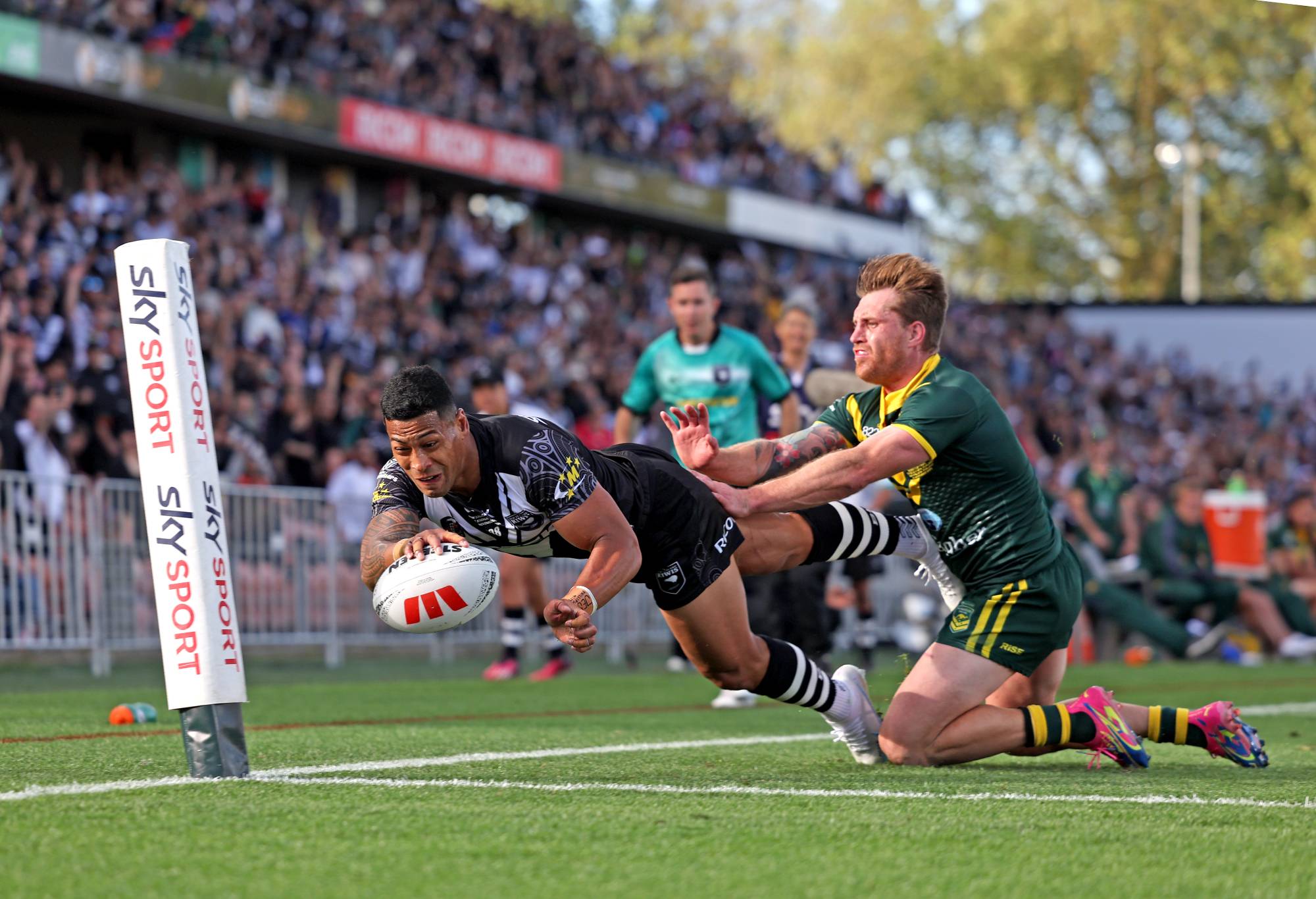
New Zealand’s Jamayne Isaako scores against Australia. (Photo by Phil Walter/Getty Images)
Against such a backdrop, New Zealand’s 30-nil demolition of Australia in rugby league’s Pacific Championship final on Saturday – the Kangaroos’ worst ever defeat – might seem shocking or stunning. For those born since the 1970s and who’ve known little but Kangaroo victory parades, such a reaction may even be understandable.
Despite being a child of the 1980s, I’m yet to suffer a jaw injury because we’ve been here before – in 1952 to be precise – and for many of the same reasons.
So, what happened 71 years ago, and what, if anything, does it mean today?
First, some context. Until the late 1970’s, international league was hard for Australia. They had some success – imagine the Wallabies in the days when they were at least semi-competitive – but Great Britain were usually a formidable foe, and France even snagged a valedictory series win over the Kangaroos in 1978.
Going back further, in the four years after World War II, Australia lost more than it won, and that wasn’t unusual, with victory at home to Great Britain in 1950 the first time the Kangaroos had held the Ashes in 30 years.
It was a big win, a new dawn even. Clive Churchill was captain, the talented Keith Holman was at half and they packed a punch up-front through Brisbane-based boppers Duncan Hall and Harold ‘Mick’ Crocker.
Hopes were high when France arrived down under for the first time in 1951. Les Chanticleers hadn’t troubled Australia in 1949 and there was little to indicate a dramatic shift. But the Kangaroos hadn’t encountered the brilliant, enigmatic, chain-smoking fullback Robert Puig-Aubert before. While the Kangaroos recovered after defeat in the first test, they were trounced 35-14 in the decider.

Clive Churchill (left) is one of Australian rugby league’s most revered figures. (Photo by Charles Hewitt/Picture Post/Hulton Archive/Getty Images)
Defeat in ’51 could be partly forgiven on the grounds that the French had thrilled local audiences with their “open play”, “sound defence” and “really amazing handling”, but it seems patience was wearing thin by the time New Zealand visited midway through 1952.
There was expectation but also more than a hint of arrogance on Australia’s part. Much of the press coverage at the time was focussed on who would make the forthcoming Kangaroo tour, with the series against the Kiwis openly referred to as ‘preparation’.
Before the war, Australia hadn’t taken New Zealand very seriously either, with the Kiwis often touring Australia without playing test matches. While they’d reportedly played well in England and France in ‘51, and while the Kangaroos’ record against them was a very mixed bag, New Zealand were deemed to be ‘lacking stars’ and not much of a threat.
The Kangaroos comfortable 25-13 win in the first test at the SCG did little to dispel such notions and it seems Australia thought the series as good as won, with preparations for the tour commencing. Toowoomba prop Jack Rooney was dispensed with in favour of one-test wonder Kevin Hansen and the backline reshuffled to accommodate Manly’s Gordon Willoughby. It didn’t work out well.
When the teams reconvened at the Gabba a couple of weeks later, most expected the series to be decided and as Ian Collis and Alan Whiticker wrote, “few were prepared for the enormity of New Zealand’s victory over a cocksure Australian side”.
After the teams traded penalty goals in the early stages, New Zealand started to take control, with their forwards winning the physical battle in open play and creating second phases for halves George Menzies and Jim Haig, who in turn unleashed the backs.
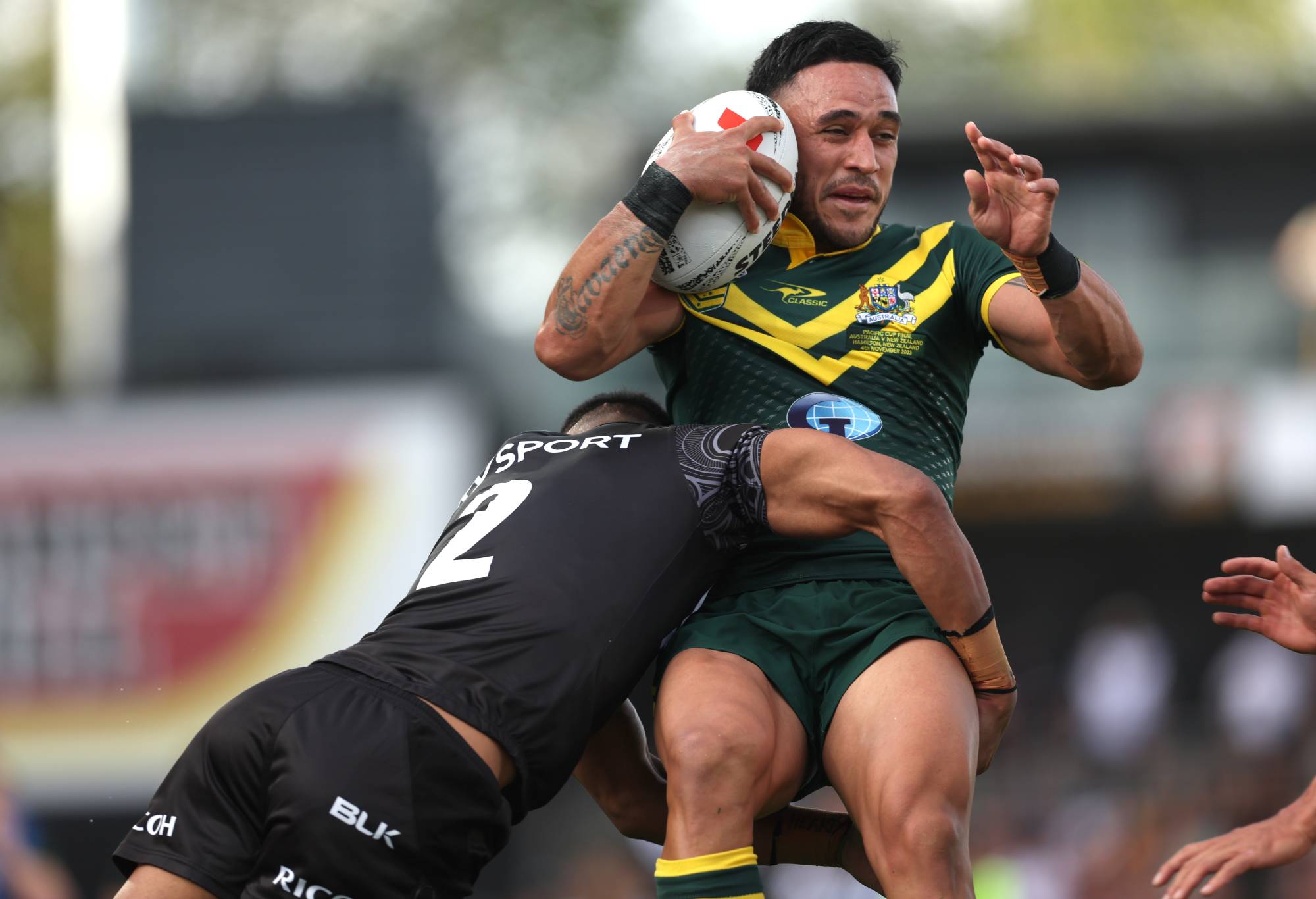
Australia’s Val Holmes against New Zealand. (Photo by Phil Walter/Getty Images)
Makeshift winger Cyril Eastlake and centre Ron McKay took full advantage, with McKay reportedly running in a try after beating nine defenders, before second rower Alister Atkinson crossed after Menzies, Haig and McKay handled in “dazzling fashion”. Alarming signs, but the Kangaroos were still a chance with the score only 19-10 at half-time.
Early in the second half, they unravelled completely, with the Kiwis counterattacking brilliantly. The Brisbane Truth reported “the staggering factor in [New Zealand’s] overwhelming mastery was that Australia won scrums during that debacle period 11-3. In other words, Australia had almost all of the ball, yet NZ scored five tries in 23 minutes”.
With the clock approaching 70 minutes, the Kiwis led 42-10, only to ease off and let the Kangaroos narrow the margin to 49-25 at the close. Until Saturday last, it was their worst ever defeat.
The reaction was swift and brutal. Jim Mathers writing for Truth described the Kangaroos as “a spineless and demoralised side” who were “crushed and humiliated and shamed the men who selected them”.
Churchill and Newcastle lock Albert Paul came in for heavy criticism, with Churchill’s poor kicking blamed for at least two tries, while Paul was lambasted for having “feet of clay” in defence and essentially not being Mick Crocker.
The reaction of the selectors was similarly brutal with seven changes made for the third test at the SCG. It made little difference, though, as McKay and Eastlake picked up where they left off in Brisbane and the Kiwis won 19-9 to clinch the series.
This was a lean period for the Kangaroos. The Immortal Clive Churchill represented his country 38 times between 1948 and ’56, winning just 17 of those games, and it wasn’t until a few years later when the team was chock-full of champion St George players that things picked up.

Did Australian coach Mal Meninga underestimate the Kiwis? (Photo by Bradley Kanaris/Getty Images)
But I’m here to talk about that fateful day in June 1952 and the lessons which should have been heeded. Some are obvious – a captain and fullback badly out of form and a lot of unnecessary tinkering with the forward pack – but it’s more than that.
Everything in the lead-up to the embarrassments of 1952 and 2023 would surely have added fuel to the fire of Kiwi motivation. Resting and rotating players as if your opponents are mere preparation for something else and not an equally proud rugby league nation with an even longer history in the international game would surely have been noted.
Taking the Kiwis lightly, even writing them off, after one win didn’t work too well in either case, nor did underestimating the quality and resilience of individual New Zealand players. It’s almost as if Mal Meninga and his staff didn’t know about the events of 71 years ago.
Maybe we shouldn’t be too harsh on the Kangaroos, though. They copped touch-ups from strong Kiwi teams in 2005 and ’08 and bounced back well. And in good news, we might be moving toward a highly competitive international scene almost reminiscent of the 1950s, due to the IRL’s eligibility rules, the demographics of the elite player cohort and the evident enthusiasm many hold for representing heritage.
All of which should reinforce the message that the only test match which matters is the one in front of you – not the one next week or in England later in the year.
Then again, there might be a little more to the motivation of the conquering Kiwis of ’52 – a resented ‘snub’ according to Truth, which has only given me occasional cause to doubt the efficacy of its reporting.
As they were preparing for the do-or-die second test, a party of Kiwi players made their way to Brisbane’s Tattersalls Club seeking a game of billiards. Despite presenting their honorary memberships at the door, the players were turned away by an officious Mr Mullin who declared that “you cannot be admitted here. You have no ties and you are wearing sport shirts”.
Maybe it was the snub. You can never underestimate the little things.


































































































